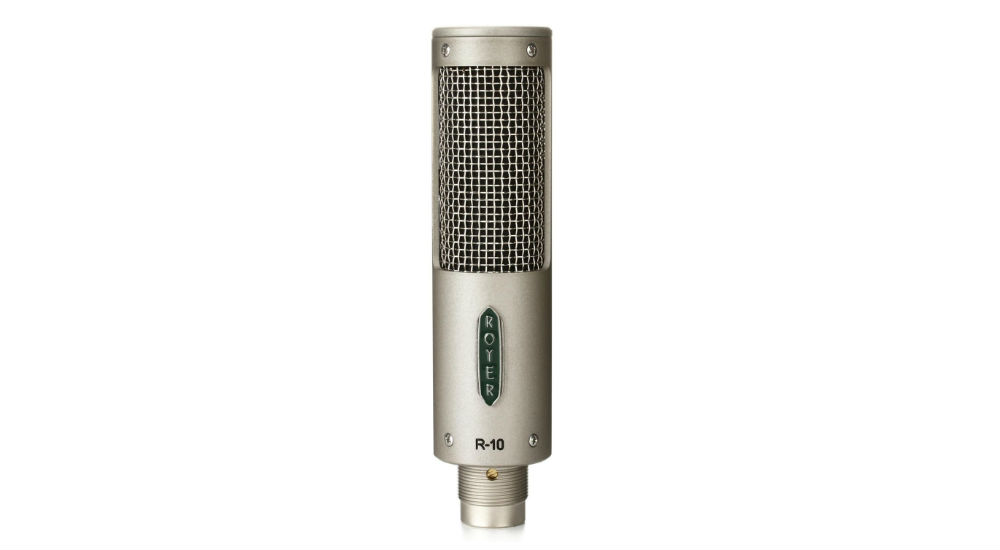For this installment, we’re diving deep into the world of studio microphones, exploring the massive range of ribbon, condenser and dynamic options on the market for savvy producers, engineers and project studio enthusiasts.
Royer R-10
Category: Ribbon | Pattern: Figure-of-eight
Key Features: When it comes to ribbon microphones, few can boast as impressive a track record as Royer. The American purveyors of all things ribbon mic, have built a stellar global reputation for their ability to produce hardy, sublime sounding microphones with the modern engineer in mind. Their beloved R-121 has grown to become a bona fide classic in the space (and in many ways has changed the way guitar amps will be forever miced up moving forward)
Royer’s new R-10 passive ribbon microphone (based off the now-discontinued R-101) sees Royer continue this legacy, but expanding it’s practical application even further, this time with a knowing eye firmly on studio and live markets in equal measure.
As an entity, Royer have been challenging the prevailing status quo since 1998, producing ribbon microphones that are resistant to all the usual stressors of live and studio performance, quelling fears of fragile construction and costly repair tags, and in turn delivering the warm, realistic sound that has seen the Ribbon become such a beloved and inimitable sonic presence in the recording world, with the kind of hardiness and volume tolerance that ribbon acolytes have been asking for all those years.
The R-10 itself boasts a ridiculous SPL tolerance of 160 dB at 1kHz, making it a more than suitable option for placing in front of blaring guitar cabs, floor toms and vocals, all without damaging the ribbon and all without introducing any kind of distortion at the mic end.
Close-mic scenarios such as these are where the R-10 really excels, delivering warmth and fullness without compromising on transient detail, providing a classy, open capture that sits elegantly in a modern mix.
The R-10 shares the tough cylindrical metal design of its forebear, opting for a cool industrial steel finish (over the black sheen of the original R-101).
Slightly heavier duty than its siblings, the ribbon element found in the R-10 is protected by a chunky metal grille, providing impressive protection and giving the mic a feeling a roadworthiness that is sure to fill any FOH engineer with confidence.
Mixdown Says: With a frequency spectrum of 30 Hz to 15 kHz, and a subtle high frequency response, the R-10 is a slightly smoother affair when compared to some of the brasher sounding microphones in the studio, and in that regard, I can see the R-10 getting a lot of engineers out of a jam, providing a warm complimentary voice wherever it is needed. If you were looking to inject a bit of extra high end into proceedings, simply flip it around to its rear side, which has a slightly brighter profile and an increased sensitivity.
The price tag alone makes the R-10 a super accessible microphone for anyone looking to add that classic ribbon vibe to their sonic palette.
Also of note is how well the R-10 takes to EQ and processing. Some gentle high end boosts here and there will bring out textures and sounds that are other nothing short of beautiful. The same can be said for many other instruments too- the R-10, like all Royer microphones, sounds fantastic on strings and woodwind and with a touch of EQ, these instruments just jump out of the speakers with vibrancy and texture to burn.
Overall: A classy choice at a very attainable price point, Royer’s R-10 is proof that it is possible to integrate coveted hi-end studio mics into your live kit or humble project studio, without having to refinance your house. It’s rugged durability and ability to produce supple, highly workable results will no doubt see it become a permanent fixture in the mic cabinets of engineers everywhere.
Find out more about the Royer R-10 through Mixmasters today.

